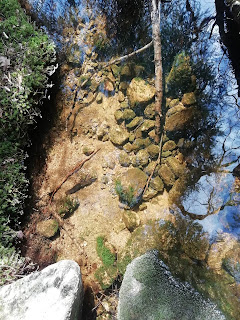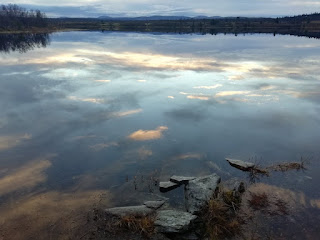Different approaches to meditation
I started meditating when I was 17 years old. I remember I wanted to explore why I sometimes chose an action which didnt feel aligned with my inner truth. At the time the only form of meditation which was available was a norwegian-based method, ACEM-meditation. It is a non-directive meditation, which allows thoughts to come and go of their own accord, while a meditation sound is effortlessly repeated in the mind.
Nondirective meditation facilitates the stimulus-independent, task-unrelated, spontaneous activity of the mind. Its focus is not to empty the mind of thoughts, but to bring relaxation and cultivate a free mental attitude and the acceptance of mind wandering and spontaneous thoughts. The thoughts, feelings, images, and sensations that pass through the mind of their own accord are not seen as disturbances, but as important resources. Research has shown that during nondirective meditation, the activity of the brain`s default mode network (also known as the resting state network) increases, in particular areas associated with memory retrieval and emotional processing. Nondirective meditation also induces changes in the autonomic nervous system, more specifique it lowers sympathetic nerve activity and increases parasympathic activity.
The central element of nondirective meditation is the free mental attitude, which includes both the effortlessly repeating of a method sound, and a wide-angled attention which is aware of both the deliberate activity eg. the repeating of the sound, and the spontaneous mental activity that comes and goes in the periphery of the mind. In contrast to nondirective meditation, directive meditation will limit the flow of spontaneous mental activity by suppressing it or by refocusing away from it, for instance by changing the spontaneous activity in a more loving direction. In this perspective directive meditation may be described as goal-oriented, rather than process-oriented. (Source: The power of the wandering mind. Nondirective meditation in science and philosophy. Eifring, H. (ed). 2019.)
Another type of meditation I practice is Circling and Relatefullness, both are group-based meditation practices which are in their core nondirective, focusing on being present with what is spontaneously alive in the now, even though the practice are guided in different ways, depending on school. These practices are powerful arenas for cultivating free floating attention and acceptance of the spontaneous activity of the mind, which to me creates possibilities for expansion of awareness and ability to notice more of reality. Our lives are very much goal-oriented, and concentrated on performing tasks. To have space for process-oriented attention, emphasizing the accepting witnessing of the spontaneous flow of thoughts, emotions and sensations, is nourishing and enhances expressions of creativity and freedom in life.
When I started practicing ACEM-meditation an important experience was to become more aware of my self-attitude, or more specific how I relate to my own spontaneous flow of thoughts, emotions and sensations. In Circling and the Relateful approach this also becomes visible, but now in connection with other people. Do I notice my spontaneous inner life, or do I become focused on the others? Can I hold both myself and the others in my awareness? How do I meet what arises in me every moment, do I feel it is acceptable to share it in the group or do I hold back?
When bringing awareness to what is here, it feels like allowing myself to open up to the many layers of my being. The first layers may be quite familiar, habitual patterns of thoughts and emotional reactions. When they are processed in awareness, deeper and more unknown layers may become visible, dimensions of myself which I didnt know anything about, maybe scary and challenging, maybe intensely beautiful and empowering. And the journey into the layers never ends, it feels like the exploring of new dimensions of self may continue endlessly. I love that moving into the concrete sensory present which is always changing, opens up for connecting with eternity, just like the sky is reflected in the stream in the image at top of this text.




Comments
Post a Comment